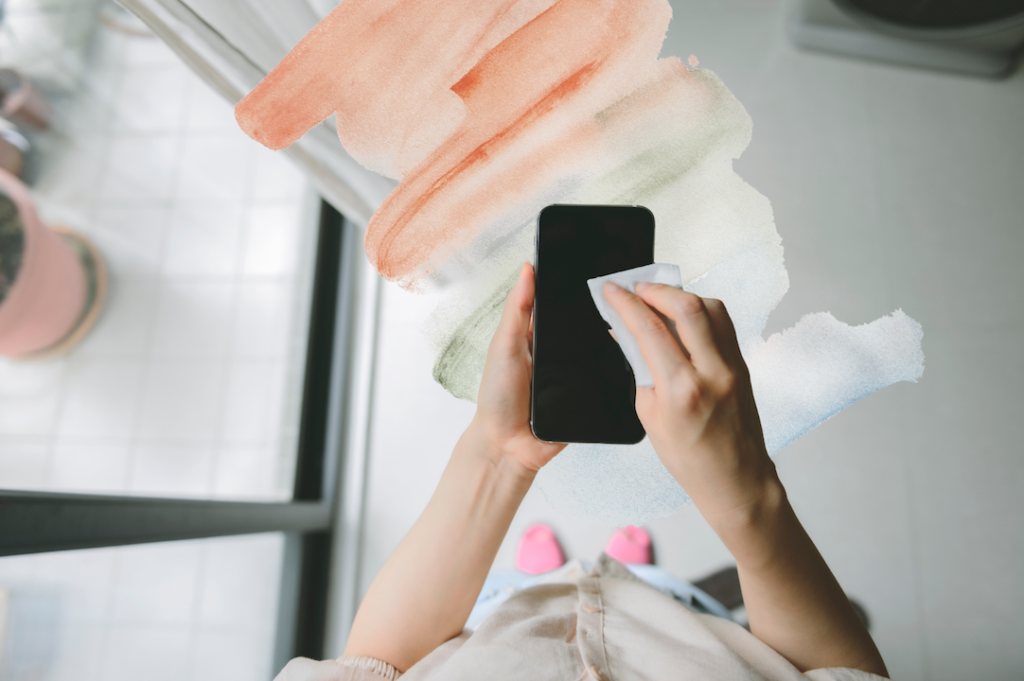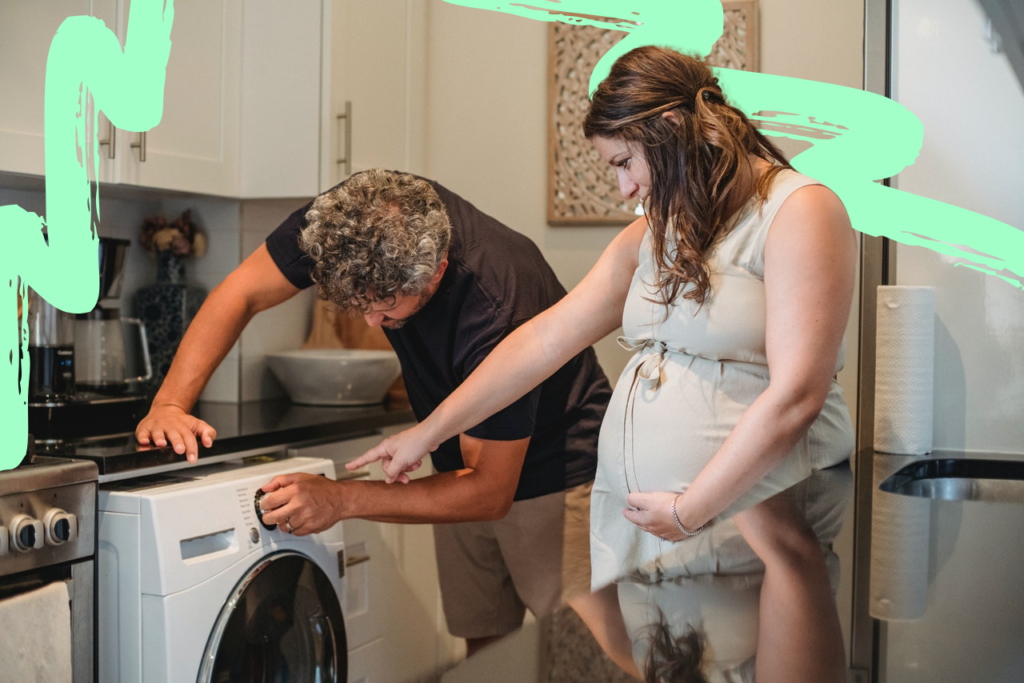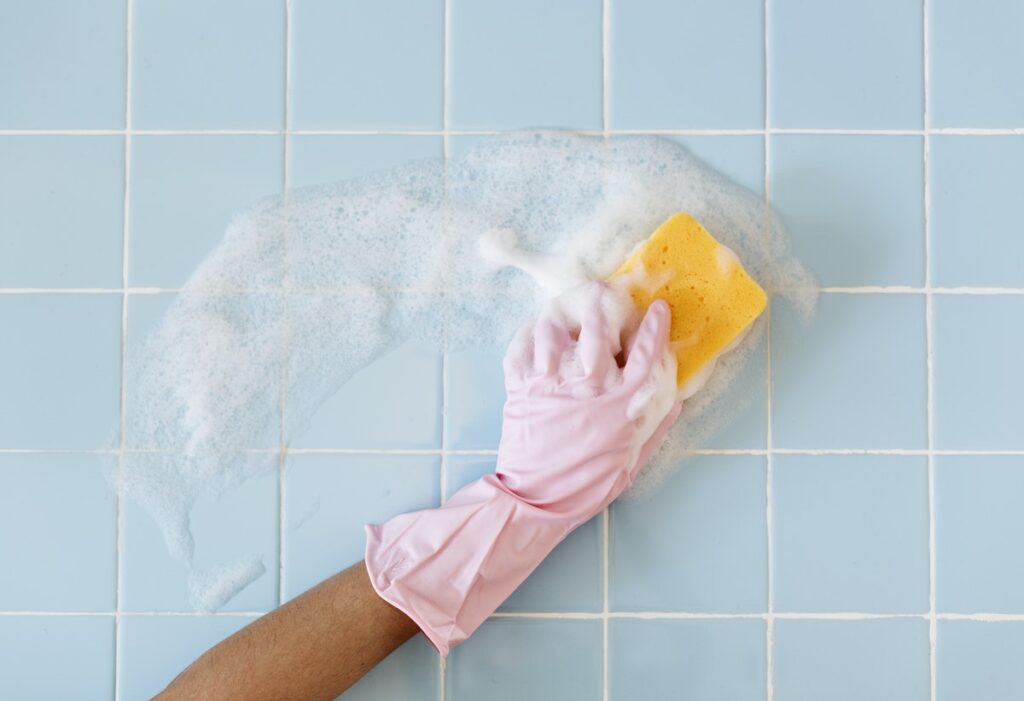When it comes to keeping a clean home, most of us will diligently scrub our bathrooms, polish our kitchen surfaces, and hoover our living spaces with the utmost care. However, despite our best efforts, there are certain areas within our abodes that harbour more bacteria and grime than we could ever imagine. These hidden germ hotspots can often be the most surprising, lurking in plain sight, yet frequently overlooked in our cleaning routines.
With that in mind, today we’re (somewhat reluctantly) uncovering the most unexpectedly dirty places in your home and providing you with practical advice on how to keep them spotless. Only then will we take you up on that invite over for dinner…
The Overlooked Offenders
1. Household Handles and Switches
Doorknobs, cupboard handles, and light switches are touched multiple times a day by various hands, making them prime real estate for germs. Yet, they are often neglected during regular cleaning.
Sanitising Tip: Wipe these surfaces down at least once a week with a disinfectant wipe or a cloth dampened with a mixture of hot water and antibacterial soap.

2. Remote Controls and Electronic Devices
Our electronic companions, from remote controls to smartphones, are handled constantly and rarely cleaned. They can become a breeding ground for bacteria.
Sanitising Tip: Use an alcohol-based wipe to gently clean your devices, being careful not to damage any sensitive areas with excess liquid.
3. Kitchen Sponges and Cloths
Ironically, the very tools we use to clean can become the dirtiest items in our homes. Kitchen sponges and cloths can contain a higher number of bacteria than any other household item, leaving quite the smell behind if you’re not careful.
Sanitising Tip: Replace sponges regularly, and microwave damp sponges for two minutes daily to kill bacteria. Wash cloths at a high temperature and let them dry thoroughly before reuse.

4. Toothbrush Holders
Toothbrush holders are often found near sinks and toilets where they can be exposed to a host of germs, including E.coli.
Sanitising Tip: Regularly run your toothbrush holder through the dishwasher if it’s dishwasher-safe, or wash it in hot, soapy water.
5. Pet Bowls and Toys
Our furry friends’ accessories are often forgotten in the cleaning process. Pet bowls and toys can harbour bacteria that can affect both pets and humans, not to mention the musty aroma they often leave in their wake.
Sanitising Tip: Clean pet bowls daily and toys weekly, either in the dishwasher or with hot, soapy water, depending on the material they are made from.
Read: 7 hacks for keeping your home smelling good when you have pets

6. Handbags and Wallets
These personal items come into contact with various surfaces throughout the day but are rarely cleaned.
Sanitising Tip: Wipe leather goods with a suitable cleaner and use disinfectant wipes on other materials, paying special attention to handles and corners.
7. Washing Machines
A device that’s supposed to clean your clothes can become surprisingly dirty itself, especially if you often wash at low temperatures.
Sanitising Tip: Run a hot wash cycle with a washing machine cleaner or white vinegar once a month to keep the machine and your clothes fresh.

8. Bedding and Mattresses
While sheets and pillowcases may be washed regularly, the mattress and duvet often go unnoticed. Dead skin cells, dust mites, and other allergens can accumulate, making your bed a hotbed for germs.
Sanitising Tip: Vacuum your mattress every month, use a mattress protector, and air out your duvet and pillows on a sunny day to reduce allergens. Wash bed linen weekly at a high temperature to kill dust mites. Many brands, such as Tineco, offer cordless vacuums equipped with strong suction power that can handle everything from dust and pet hair to larger debris.
9. Keyboards and Mice
Whether it’s for work or leisure, our computer keyboards and mice are in constant use. Crumbs, spills, and germy fingers can make these devices surprisingly dirty.
Sanitising Tip: Turn off your computer, unplug the keyboard and mouse, and gently shake out any debris. Use compressed air to blow out particles from between the keys, and clean the surfaces with a cloth dampened with isopropyl alcohol, ensuring it’s not too wet to prevent any damage.
10. Showerheads
The warm, moist environment of a showerhead is ideal for bacteria and mould to thrive, especially if you have hard water which can cause mineral build-up.
Sanitising Tip: Detach the showerhead and soak it in a mixture of white vinegar and water for a few hours to dissolve mineral deposits and kill bacteria. If it cannot be removed, fill a plastic bag with the vinegar solution and secure it around the showerhead with a rubber band, allowing it to soak.

11. Houseplant Leaves & Pots
While our leafy companions bring life and freshness to our homes, their leaves and pots can accumulate surprising amounts of dust, mold, and bacteria. The moist soil in plant pots can harbor fungal growth, while dusty leaves not only look unsightly but can also impair the plant’s ability to photosynthesize effectively.
Sanitising Tip: Gently wipe plant leaves monthly with a soft, damp cloth to remove dust buildup. For smaller plants, you can give them a shower in the sink or bathtub using lukewarm water. Check pot saucers regularly for stagnant water, and clean decorative pots with warm, soapy water when you repot plants. Consider adding a layer of pebbles or activated charcoal on top of the soil to prevent mold growth and fungus gnats.
Keeping Your Home Hygienically Clean
Maintaining a hygienic home is not just about the visible cleanliness but also about being mindful of the unseen germs that can accumulate in the nooks and crannies of our living spaces. Here are some general sanitisation tips to keep your home clean:
- Regularly Disinfect: Incorporate the cleaning of these surprising areas into your regular routine.
- Stay Dry: Moisture is a breeding ground for bacteria, so keep your home as dry as possible.
- Ventilate: Good airflow can help prevent the growth of mould and mildew.
- Declutter: Less stuff means fewer places for dust and germs to hide.
- Use the Right Tools: Microfibre cloths and the correct cleaners can make a big difference in the effectiveness of your cleaning.
The Bottom Line
By shining a light on these surprising dirt magnets and adopting a thorough cleaning regimen, you can ensure that your home remains not just sparkling on the surface, but deeply sanitised for the health and well-being of everyone under your roof.
Remember, a clean home is a happy home, and sometimes the smallest efforts can make the biggest difference in our quest for cleanliness.





